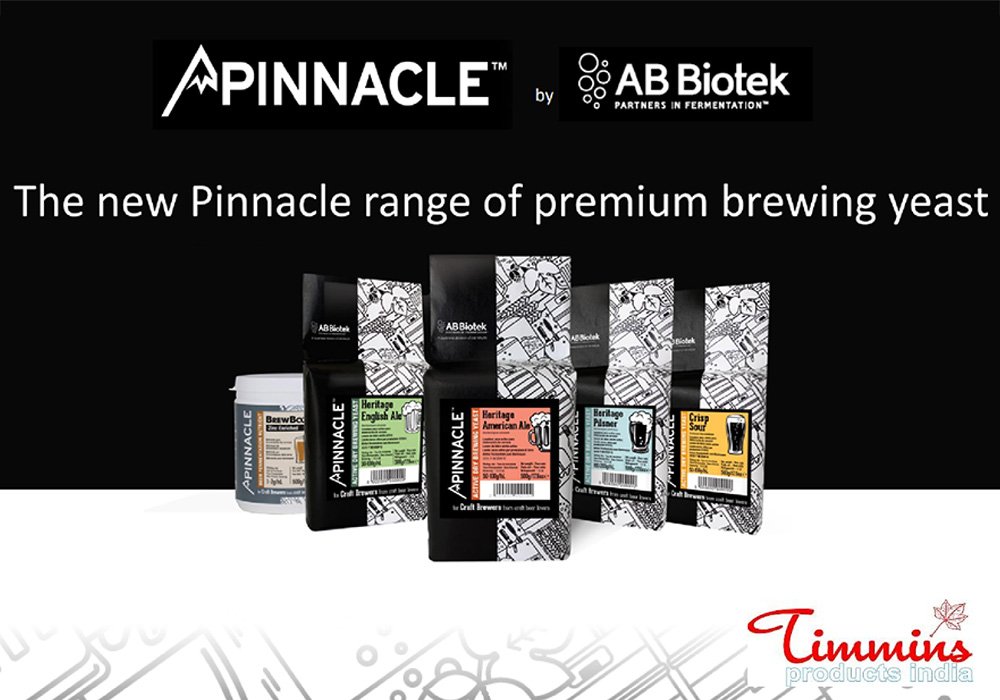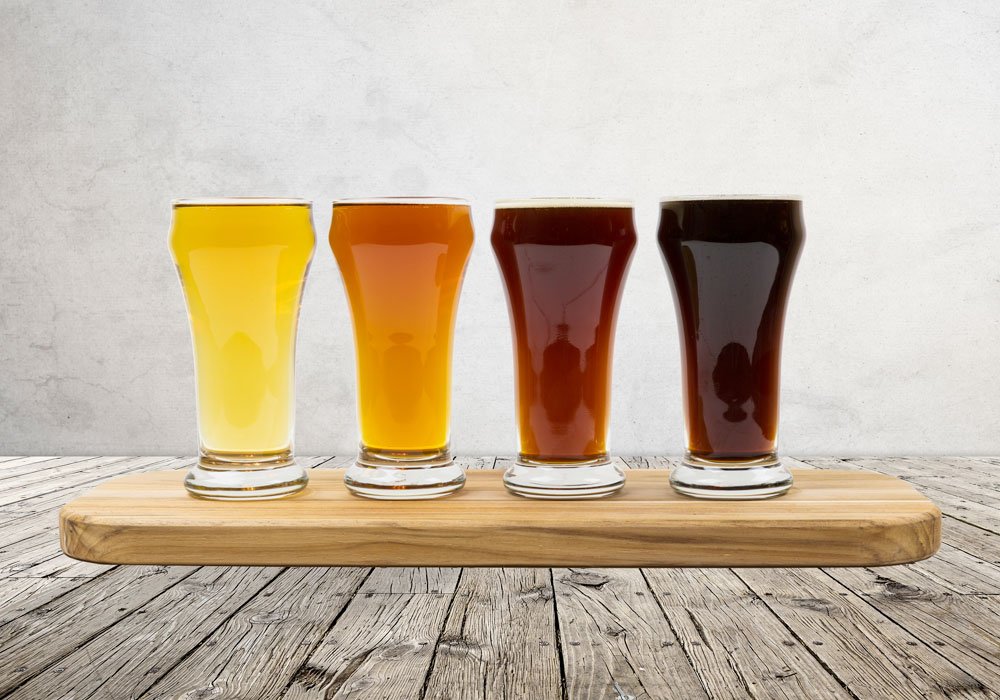
George Jacob
George is a brewing consultant who is certified in Craft Beer by Brewers Association, a Cicerone certified Beer Server, and a Certified Beer Steward by the Institute of Brewing & Distilling.
You don’t have to be a Certified Cicerone® to be able to taste and identify a good beer from a great one. There are a few simple steps to follow, which will take your beer tasting to the next level. But before we get to beer styles and notes, we need to understand the building blocks of beer flavour and description. Below, I talk about the main ingredients in beer and their flavour contribution.
Beer is made of four main ingredients- Water, Malted barley, Hops and Yeast. Brewing an average pint uses about 680ml of water, 85g of malt, 5g of hops, and 0.3g of yeast.
Water - Brewing water, also known as brewing liquor in the industry, must be pure drinking quality. Minerals salts affect the flavour and style of beer being brewed. A slightly acidic water aids in the keeping properties. Always remember that a high quality water supply is essential in brewing.
Malt - Malted barley provides nutrients for yeast to ferment; starch is converted to sugars, proteins to amino acids, and vitamins and minerals. Various types of malts are available to brewers ranging from Pale, to Caramelised, to Dark Roasted.
Different malts provide flavours like grass, bread, corn, vanilla, toffee, nuts, coffee, treacle, chocolate, and liquorice to name a few. Brewers select the different malts based on the desired flavour profile of their beer.
Some beers also use adjuncts like wheat, rice, rye, etc but that’s a whole topic for another article.
Hops - Hops are the spice of a beer. They are the fruiting body of the hop plant. Hops provide beer with antibacterial properties, bitterness, and some wonderful unique aromas. They are used whole, or in the form of pellets or liquid extract. Hops bring flavours like grass, fruits, flowers, earth, spices, pine, citrus, and many more.
Yeast - There are three main yeast types - Ale, Lager and Lambic (wild). The yeast converts the malt sugars to alcohol. Yeast brings flavours like apples, green apples, apricot, pear, banana, garlic, eggs, onions, peach, candy, and so on.
The Art of Tasting and Experiencing
Creating a flavour profile for a beer involves describing the look, taste, aroma, mouth-feel and aftertaste.
Look - Raise your glass and look at the beer. Note its colour, consistency and head.
Aroma - Smell the beer. Stick your nose deep into that glass and take a breath. Note the aromas that you can detect. Swirl the glass to agitate the beer, which releases the aromas, and breathe in again.
Aroma & Taste - Take a sip of the beer, and chew on it, while breathing out your nose. Known as the retro nasal technique, this carries aroma molecules from your mouth to the olfactory nerves in your nasal passages. The combined effects of taste and aroma are known as flavour. Sweet, sour, salty, bitter, umami, and other tastes come from our taste buds as we chew.
Mouth-feel - This includes the physical aspects of the beer perceived by our sense of touch, such as the texture and body. It can be thought of as the physical, non-flavour characteristics of the beer while it is in your mouth, stimulating your sense of touch. Examples of mouth-feel descriptors include viscosity, texture and astringency.
Aftertaste - Aftertaste is the flavour perceived after the beer is swallowed. Some components of the liquid linger on the tongue or the mouth, which creates a different impression than when the mouth is full. An aftertaste can be short, clean, long or lingering. Some may be sweet and malty, some are bitter and minerally.
Well known Beer Styles
The following beer styles are some of the more common beers served at breweries in the country. It’s a short list, but covers beers that would be good start to your tasting journey.
I have explained the expected profiles for each style of beer, but you should try and make your own notes on the beer before comparing with mine.
Bavarian Hefeweizen
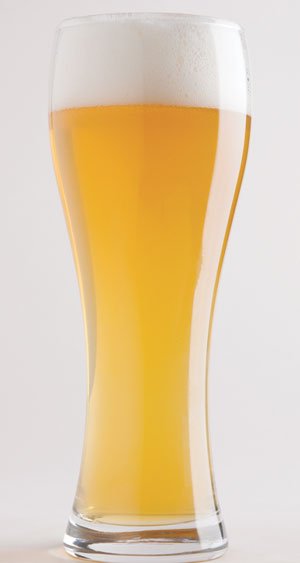 A traditional Hefeweizen (heh-feh-weyt-sen) is a refreshing wheat beer that has a high level of carbonation with a dry finish. The yeast lends a very distinctive banana and clove character.
A traditional Hefeweizen (heh-feh-weyt-sen) is a refreshing wheat beer that has a high level of carbonation with a dry finish. The yeast lends a very distinctive banana and clove character.
Aroma - A properly brewed Hefeweizen will display moderate to strong clove and banana aroma. Hop character is pretty much nonexistent. Some wheat aroma may exist, and can be identified as bready or grainy.
Appearance - The beer is expected to be between a pale straw to gold colour. Wheat being very high in proteins will cause the beer to be quite hazy. The head will be white and long lasting.
Flavour - The banana and clove flavours can range from moderate to low. The balance between the two can vary between breweries, but a good beer would have these two well balanced and quite prominent. Some examples of a Hefeweizen may also have a light vanilla character and/or bubblegum. A soft bready/ grainy character from the wheat is complementary to the style, along with a very slight sweetness from the malt. Hop flavour doesn’t really exist and hop bitterness is low to none.
Mouth-feel - Look for a fluffy, creamy, light to medium body. The finish will be light and spritzy due to the high level of carbonation.
India Pale Ale (IPA)
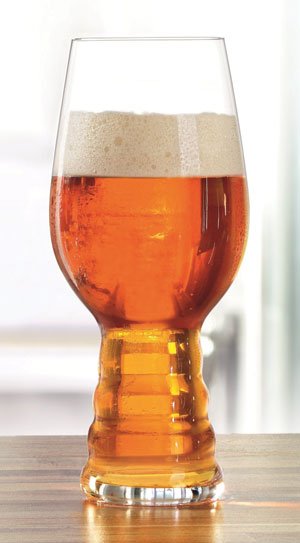 While there are American and English IPA available, a true IPA should be brewed using traditional British ingredients. An IPA is a hoppy, moderately strong ale with a dry finish, and lots of hops aroma and flavour.
While there are American and English IPA available, a true IPA should be brewed using traditional British ingredients. An IPA is a hoppy, moderately strong ale with a dry finish, and lots of hops aroma and flavour.
Aroma - Expect a moderate to moderately high hop aroma of spicy, citrus or floral nature. A low caramel or toasty malt presence is acceptable, as well as some fruitiness.
Appearance - An IPA is usually between a golden to deep amber. It should have a thick frothy off-white head, and pour clear, though there do exist some unfiltered dry hopped versions.
Flavour - Hoppy! An IPA should show some malt character even though the balance leans towards the hops. Malts can lend a biscuit, toasty, toffee like aspect to the beer. The hop flavour should be similar to the hop aroma depending on the variety of hops used.
Mouth-feel - It is very important that there isn’t any astringency from the hops. Medium to high carbonation could add a dry sensation, along with a medium bodied mouth-feel. Some high alcohol versions may have a smooth warming sensation from the alcohol.
Stout
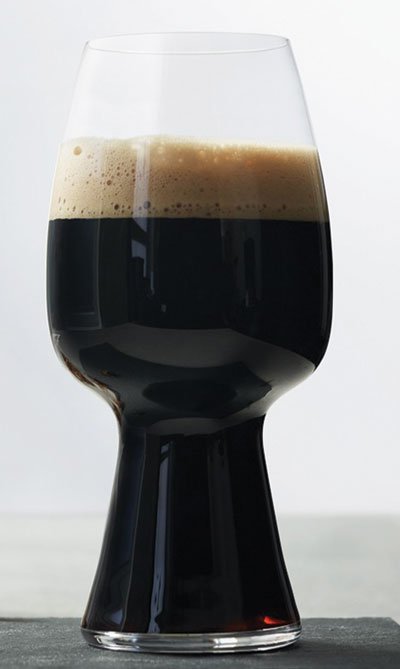 The Stout is a descendant of the British and Irish porters of the 18th Century. A stout should come across as a black beer, with a strong roasted flavour that is easily confused with coffee.
The Stout is a descendant of the British and Irish porters of the 18th Century. A stout should come across as a black beer, with a strong roasted flavour that is easily confused with coffee.
Aroma - A stout should give off a coffee like aroma that dominates everything else. There may be some hop aroma but is usually very low or absent.
Appearance - Jet black and opaque, with a thick creamy head that is usually tan coloured.
Flavour - Stouts usually have a prominent roasted grain flavour with medium to high hop bitterness. Typically a coffee flavour dominates with some chocolate character at the finish. Some stouts may also have a hint of liquorice as an aftertaste.
Mouth-feel - Medium to full bodied, with a creamy character (especially when poured from nitro). Minimal carbonation is usual, though you can expect some astringency being caused from the roasted grains. While this astringency is acceptable, there should not be any harshness left over from the grain.








